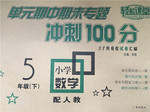题目内容
15.Children who spend more time outdoors may have a lower risk of becoming nearsighted,new research suggests.In the study,researchers looked at about 1,900 school children.The scientists found that the kids who had been instructed to spend more time outdoors over three years were 23 percent less likely to develop nearsightedness during this time than those who had not been instructed to spend more time outdoors.Moreover,among the kids who did become nearsighted during the study,the degree to which their eyesight worsened was slightly smaller among those who spent more time outdoors.
The researchers selected six schools and required the children,whose average age was 7 at the start of the study,to attend one additional 60-minute class of outdoor activities during each school day for three years.The parents of these children were also encouraged to engage their children in outdoor activities after school,especially during weekends and holidays.The other half of the children,from another six schools,continued their usual activity patterns.After three years,30.4 percent of the kids in the intervention(干预) group had become nearsighted,compared with 38.5 percent of the kids in the other group.
It is not clear exactly why spending more time outside would benefit children's eyesight,the researchers said.However,some research has suggested that the higher levels of light intensity found outdoors may increase the release of the chemical dopamine(多巴胺) of the eye.In turn,dopamine is known to restrain(抑制) the type of growth in the eye that is associated with nearsightedness.
Based on the new results,the researchers recommend that children spend more time outdoors because of the potential benefits to their eyesight.However,it's important to protect kids'skin and eyes from UV light,which can be damaging.
32.What did the children in the intervention group do during each school day?A
A.Attend an extra class of outdoor activities.
B.Continue to do their usual activities.
C.Spend one hour in doing eye exercises.
D.Participate in outdoor activities with parents.
33.What can be inferred about the chemical dopamine?C
A.It can contribute to poor sight.
B.It can damage people's brain.
C.It is beneficial to eyesight.
D.It means low levels of light intensity.
34.What may be discussed in the following paragraph?C
A.How to design outdoor activities for kids.
B.How to prevent kids becoming nearsighted.
C.How to protect kids'skin and eyes from UV light.
D.How to encourage kids to join in outdoor activities.
35.Which can serve as the best title for the passage?B
A.The More Time Outdoors,the Better
B.Kids May See Better if They Play Outside
C.It's Time to Engage Kids in Outdoor Activities
D.Researchers Found a Cure for Nearsightedness.
分析 本文属于说明文阅读,作者通过这篇文章向我们介绍了在户外活动比较多的孩子患近视的概率较小
解答 32.A 细节理解题,根据第三段whose average age was 7 at the start of the study,to attend one additional 60-minute class of outdoor activities during each school day for three years.可知他们参加一个课外的户外活动,故选A.
33.C 推理判断题.根据第四段中的"In turn,dopamine is known to restrain the type of growth in the eye that is associated with nearsightedness"可知多巴胺对视力是有好处的.故选C.
34.C 推理判断题.根据最后一段"it's important to protect kids'skin and eyes from UV light"可知接下来作者很可能会讲怎样保护孩子的皮肤和眼睛免受紫外线的伤害.故选C.
35.B 主旨大意题.根据文章内容尤其是第一段中的"Children who spend more time outdoors may have a lower risk of becoming nearsighted"可知本文主要讲的是在户外活动比较多的孩子患近视的概率较小.故选B.
点评 考查学生的细节理解和推理判断能力.做细节理解题时一定要找到文章中的原句,和题干进行比较,再做出正确选择.在做推理判断题时不要以个人的主观想象代替文章的事实,要根据文章事实进行合乎逻辑的推理判断.

 轻松课堂单元期中期末专题冲刺100分系列答案
轻松课堂单元期中期末专题冲刺100分系列答案| A. | red pretty paper | B. | pretty red paper | ||
| C. | paper pretty red | D. | pretty paper red |
| A. | work | B. | to work | C. | working | D. | worked |